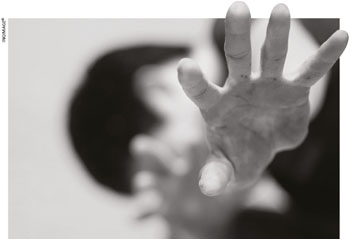PEOPLE SMUGGLING
ALL AT SEA
Janaka Perera examines the business of people smuggling

People smuggling and human trafficking aren’t the same and the difference between them is not always understood. The former is characterised by consent between customer and smuggler – a contractual agreement that terminates upon arrival at the destination.
Human trafficking involves people being lured into virtual slavery in foreign lands where the monetary transactions are between traffickers and unscrupulous persons who take advantage of cheap labour under illegal working conditions.
Common to both is that the perpetrators profit from the misery of others. Smuggled migrants are vulnerable to exploitation both during their journey and upon arrival.
In Sri Lanka, people smuggling is more common. Beginning in the 1990s, this became a lucrative business for people smugglers. Both Sinhalese and Tamil people have been among those who have tried to migrate at any cost. But the former are often viewed by foreign diplomatic missions as economic migrants with a weaker case for political asylum than the latter.
Initially, Sri Lanka’s illegal migrants were mostly fisher folk from towns like Negombo, Wennappuwa and Chilaw. And their preferred destination was Italy.
Motorised boat owners soon found people smuggling to be more profitable than fishing. So they established transportation networks that enabled them to transport people across the Indian Ocean, Red Sea, Suez Canal and Mediterranean Sea to reach the Italian coast.
Among the reasons for the fishermen’s desire to leave the island was the escalation of violence in the north that included massacres of those who came from the south during the fishing season.
These smuggling operations provided the inspiration for a film (Mille Soya) in 2004 about a group of youth who migrate illegally to Italy overland in the baggage compartment of a bus, having left the island by boat.
The first smuggling boats are believed to have left on the 20-day voyage in 1994. In the early years, their schedules were carefully planned and the voyages were relatively safe. But the popularity of the operation led to many in the business improvising the almost weekly voyages, resulting in overcrowded boats, scams and even deaths among passengers.
In the years that followed, people from other parts of the island joined the illegal migrants. Eventually, there was international reach, leading many Europe-bound Bangladeshis, Indians and Pakistanis to enter the island to be smuggled through ocean routes to Italy.
But not all were to be smuggled by Negombo’s boat owners. The smuggling racket was part of a larger international operation, as revealed in 2003 when the Sri Lanka Police detained 260 Pakistanis in Tangalle as they waited to be smuggled out of the island.
As a sufficient number of would-be illegal migrants had to be gathered prior to departure, they were held in a safe house prior to departure. The waiting time varied greatly and boats were generally overbooked, causing some to linger for weeks.
Illegal migration to Italy changed drastically in 2002 when the Italian Government introduced new legislation to enforce stricter border controls and established bilateral agreements with countries from where illegal migrants arrived to curb the migratory flow.
That year saw the number of illegal migrants peak with 2,000 Sri Lankans being smuggled to Italy. The following year, the illegal route was virtually extinguished. In later years however, Australia became the preferred destination for people who chose to migrate by any means. According to the Colombo Telegraph, a record 6,412 Sri Lankans made the journey by boat to Australia without passing through an official Sri Lankan port in 2012.
In the same year, the Sri Lankan authorities claim to have intercepted over 3,000 Sri Lankans en route to Australia. The numbers continued to rise in 2013.
But following agreements between the Australian and Sri Lankan Governments, these illegal operations nearly ended with the boat people being turned back. That was until May this year when Reuters reported that the Sri Lanka Navy had intercepted a boatload of 32 Rohingya refugees (including 16 children who had been living in India off the island’s northern coast).
Their planned destination was Australia. The two suspected Indian traffickers were arrested.
The Venerable Hegoda Vipassi – Director of the Dharma Research Centre in Ratmalana – warns that unscrupulous elements behind these smuggling operations are taking advantage of Sri Lanka’s commitment to provide shelter for refugees in line with UN regulations.
As for Sri Lankans, apart from the harrowing and terrifying experiences of a war of almost three decades, the main reason that’s led them to migrate – even at risk to life and limb – is economic hardship. Very few poor young people would not migrate to a developed country if they’re offered the opportunity.




